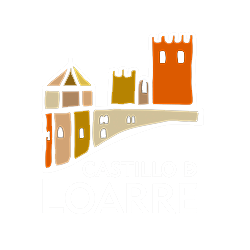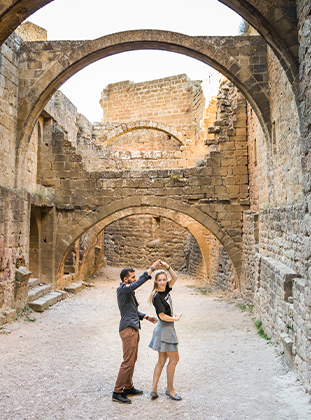Welcome to the Loarre Castle National Monument!
This imposing Romanesque fortress, dating from the 11th century, will take you on a journey through the history of Spain. Built at the beginning of the 11th century by order of the King of Navarra Sancho III “El Mayor” and later expanded at the end of the same century by his grandson Sancho Ramírez King of Aragón.
Nestled in a landscape where the traces of ancient Rome and the majesty of the Romanesque merge in perfect harmony, this fortress is considered the most outstanding Romanesque castle in all of Spain. Its irregular floor plan and impressive double walls, adorned with cylindrical towers, are silent witnesses of centuries of history and architectural evolution.
The heart of this magnificent enclave houses the church of San Pedro, an authentic architectural treasure of the 11th century Romanesque style. The imposing dome stands out in its structure, a true masterpiece of the time, where visitors can marvel at the richness of the details and the elegance of its design. Capitals decorated with Romanesque iconography further enrich the experience, providing a unique insight into the spirituality and culture of the time.
This castle was not only a strategic point towards the Muslim reconquest in its early days, but also played an important role in the religious and monastic life of the region. In its history, it has been both a royal residence and an Augustinian convent, which adds depth to its historical and cultural narrative.
Geographical location
Additionally, the geographical location of this castle offers a stunning natural backdrop. Surrounded by landscapes that have witnessed epic battles and journeys of conquerors over the centuries, the Romanesque fortress is presented as a historical jewel embedded in a natural environment of great beauty. The combination of its rich history and picturesque location creates an unparalleled atmosphere that invites travelers to immerse themselves in medieval times and experience the grandeur of a one-of-a-kind cultural heritage.



